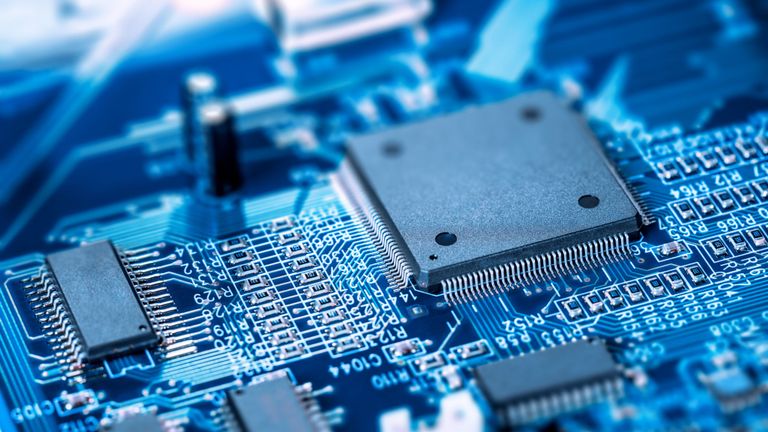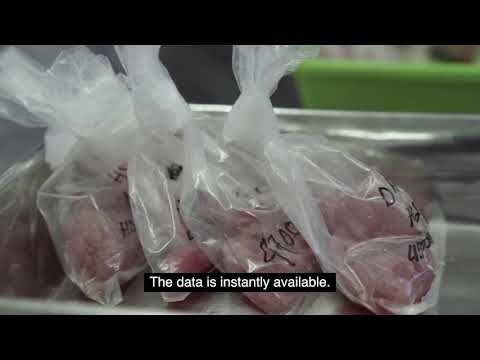
SAP Leonardo Helps Venues React in Real Time and Run Smoothly
January 26, 2019
Accelerating the Impact of Sustainable Business Practices in the Fashion Industry
January 26, 2019Do you recognize this photograph? It’s a picture of a robot from Bossa Nova that has been patrolling the aisles of some Walmart stores in the United States.
For several years, there have been attempts to bring automation to retail stores with mixed success. In the back office, a popular example is the “picking robots” being used in distribution centers for Amazon and Ocado. Even Costco’s pizza-making bot provides an eye-catching example of automation. And, like the Roomba, these innovations are meeting people’s expectations because the bot does just one thing and does it really well.
But, the Bossa Nova gives a different take on the robot story. It’s beginning to change the tasks carried out by team leads, supervisors, and managers in retail stores around the world. Powered by artificial intelligence (AI), this robot is capable of not only visually recognizing what is on the shelves but also feeding that information back into the retailer’s enterprise resource planning (ERP) and other backend systems to create notifications for necessary actions.
The Bossa Nova has the ability to directly interject itself into processes that have traditionally been fairly human. We no longer need to rely on the duty manager to walk around the shop and prioritize their team’s actions. The robot, which is currently making three laps around the stores it is deployed in each day, is able to spot the tasks needing to be done. Plus, the robot doesn’t get distracted, go to lunch, or go home at the end of the day.
Consider the level of detail a robot like this is capable of accomplishing. The on-duty manager or team leader likely won’t spot the wrong price on the shelf edge label or the item misplaced by a customer who changed their mind. Nor will a duty manager likely know the stock levels of every item in the backroom.
Since it’s always on, the robot doesn’t have to hand over information – aside from needing its battery charged – at shift change. Compared to the fast attrition in retail stores, a visual recognition robot doesn’t take time to learn its role the way new duty managers do. As such, there is a greater level of consistency and operational standards – at least based on standards that the robot is capable of “seeing.”
This robot has the potential to improve efficiency across key elements of store operations and to relieve the team leader of repetitive, mundane tasks, allowing them to focus on the customer. The duty manager hasn’t been replaced. Instead, the heavy lifting moves to AI-enabled robotics, enabling humans to do more creative thinking and use their human skills to improve a customer’s in-store experience.
Many retailers have started their journey to digitize processes in order to be more agile and grant greater visibility. This allows them to direct scarce resources to focused areas for maximum impact, for example, in hopes of digitally transforming their organization with game-changing outcomes. These retailers strive to become intelligent enterprises by effectively using their data assets to achieve their desired outcomes faster – and with less risk and margin exposure.
At the same time, millennial employees have accelerated the demand for more purpose from their work and bring new digital skills to the workforce. Currently, most work tasks are, at best, accomplished through a combination of automation and manual tasks. When involved with automation, one should examine how AI and machine learning (ML) can augment or automate human tasks and support human decision-making. After all, AI is at its best when a decision can be seamlessly automated or augmented to support an existing business process.
Let’s take the example of tying task allocation to the right people for that specific job. One employee is more effective at task one, whereas a coworker is better at task two. Who needs the repetitive effort that duty managers or team leaders perform in assigning the work? Assuming we now track both workers’ location in the store through their wearable device, we can use our emerging technology to allocate tasks based on their proximity to their next priority task, which can change dynamically as the robot rounds the next corner and spots something more urgent.
While the tasks the two coworkers have been carrying out are simply based on their efficiency, there is a natural extension to also apply AI intermediaries to the daily duties the employees enjoy carrying out. And from there, it’s a short leap to tie customer wants and needs to the skills the workers possess.
If we capture customers’ opt-in preferences that show their interests, why couldn’t we align these capabilities to the opt-in or opt-out equivalent that the store associates have?
Increasingly, customers are choosing experiences that have meaning and delegating the rest to AI. Wouldn’t customers enjoy their experience more if they were served by associates with similar passions and interests? Of course, but making the connection between the two is too complex, time-consuming, and dynamic to be carried out without AI. This will require recreating processes that are enabled by intelligent technology, backed by integrated applications.
Robots powered by agile, adaptive AI, like the Bossa Nova, allow us to think about wins that are more easily attainable than ever before. Because they will challenge the status quo, we need to engage in open and candid discussion with leadership teams and reflect on the business strategy, risk of action, and disruption to the company.
The commercial benefits of using the logic or algorithms will certainly support business justification. With unemployment rates as low as they are in many countries and a digital millennial generation needing more purpose, retaining and growing key team members will be more important than ever – in some cases costing well into five figures. Emerging technology provides a mechanism to give individuals worthwhile work, lowering the likelihood of team members leaving. Let the robots do the brain-numbing repetitive work, and let the humans use their human skills.
While we began by talking about an almost seven-foot-tall robot in Walmart stores, it’s not that much of a leap to see a huge opportunity in presenting a completely connected circle of data that allows us to create not only a step change in productivity, costs, and in-store efficiency but also to create meaningful change in the customer experience.
And that might just be the difference between success and failure in the competitive retail world in the later years of this decade.
SAP worked with more than a dozen industry experts to uncover five trends that will determine the customer experience over the next decade. The Future Customer Experience: 5 Essential Trends report, examines each of these trends and offers recommendations for how brands should respond now to prepare. Download the report.
Mark Teerlink is global vice president of Intelligent Enterprise Solutions at SAP.
Steve Mauchline is a business architect in SAP North America’s Presales unit.
This story originally appeared on the Digitalist as part of a series covering how intelligent technology, such as artificial intelligence, is likely to impact many industries and lines of business. Visit here to read the full series to date.






